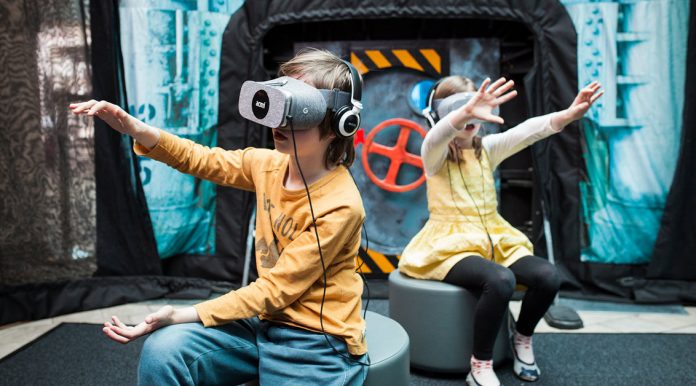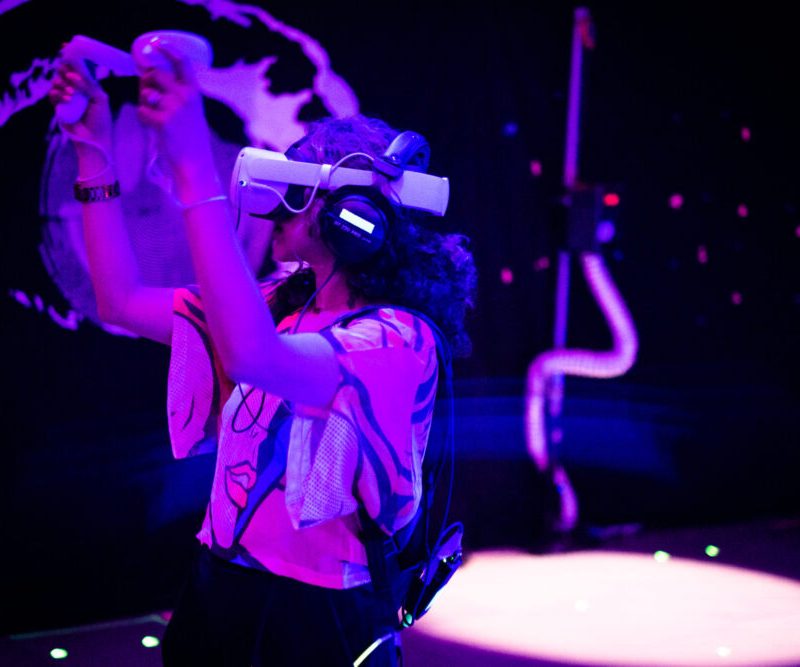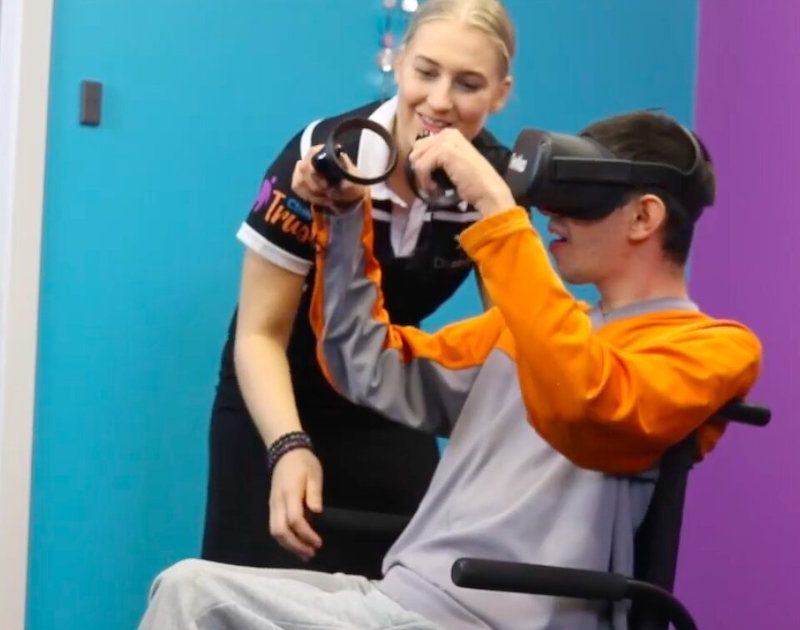If Augmented Reality and Virtual Reality are in the same virtual family, then they must be distant relatives. Sure, VR gets a lot of attention and is sort of a catch-all umbrella term for an array of technologies, but AR is hardly the black sheep of the virtual family. In fact, at the rate AR is finding its way into the workplace, it probably is more accurately described as the industrious one. While VR content and equipment has historically been developed to further entertainment purposes, AR has been used for more practical purposes.
Augmented Reality is defined by the all-knowing Wikipedia as, “an interactive experience of a real-world environment whereby the objects that reside in the real-world are “augmented” by computer-generated perceptual information, sometimes across multiple sensory modalities, including visual, auditory, haptic, somatosensory, and olfactory. Essentially, AR is the real-world reality with a virtual overlap. Whereas virtual reality often blinds the user to the current world.
Boeing researcher Tom Caudell coined the term “augmented reality” in 1990 to describe a display used by airplane electricians that mixed virtual graphics with physical reality. The U.S. Military also played a significant role in forwarding AR technology. The very first working AR systems that provided realistic mixed reality experiences for users were developed by the U.S. Air Force’s Armstrong Lab in 1992. The first of these systems was a virtual fixture system which, “is an overlay of augmented sensory information upon a user’s perception of a real environment in order to improve human performance in both direct and remotely manipulated tasks.” Basically, users wore a head mounted display and a full upper-body exoskeleton, that controlled mechanical arms.
More familiar uses of AR began sprouting up around the late 1990’s. In 1998, the first 1st & 10 yellow line was projected during an NFL game allowing the television audience to see exactly how much distance their favorite team needed to get before earning another 1stdown. In 2000, ARToolkit was created to be an open-source software library that used video tracking to overlay virtual graphics on a camera. And of course, AR did not have revolutionize the way we live our lives until the advent of Pokemon Go in 2016. It was then that AR broke through, and into, people’s homes taking the form of adorable Charmander’s and Gengars. But generally speaking, the gaming industry has traditionally focused more on VR than AR.
Anyone who’s anybody online knows about the super awesome filter’s they can put on real-time video. The dancing taco that can be inserted into snapchat photos is about to be all the rage. AR makes this possible. Snapchat is quickly becoming known for its viral AR filters and the company has released their Lens Studio design app to spur on budding AR artist and creators. Lens Studio provides the framework and guidelines that help users build World Lens filters which have the potential to go viral in no time stat.
Looking away from AR in entertainment, AR is really poised to make its biggest impact on business enterprises from a variety of industries. Where VR is making fantasies come true, AR is rooted in reality and is all about making that reality a more convenient place to operate. It is only logical that companies from the healthcare industry to the airspace industry are turning AR into dollars and cents.
Monetizing AR is only becoming more prevalent as the big tech companies begin making user friendly high-quality AR Head Mounted Displays, VR glasses, and VR goggles. One such offering by Microsoft is making waves in the AR community. Microsoft’s HoloLens is the very first self-contained, holographic computer, enabling users to engage with their digital content and interact with holograms in the real world. If this sound’s gimmicky and geared for gaming, think again. HaloLens developer kits have sold like hot cakes reaching 50,000 units sold as of May 2018. The HaloLens uses integrates specialized components—like sensors, advanced optics, and a custom holographic processing unit—into a light and comfortable wearable. Microsoft has also built a HaloLens hardhat giving construction workers access to the real time advantages of AR.
Hardware companies aside, it will be up to software developers like Tsunami XR to put AR to its most productive uses. Tsunami has been developing and delivering software applications since 2014. Utilizing AR solutions for global business requires visually appealing, highly interactive applications. Tsunami XR combines these applications with analytic data to explain and service complex products, unlock operational efficiencies, increase uptime of industrial equipment, and improve workforce training, productivity and safety. This list is hardly exhaustive as new AR solutions are being created daily. Companies from around the globe have taken notice of Tsunami XR’s software solutions which can operate along leading hardware devices.
About Alex Hern CEO of Tsunami XR
Alex Hern has been an entrepreneur for more than 25 years. During his career, he has focused on early stage companies and on the incubation of technology companies. Mr. Hern co-founded and served as a Director of Inktomi Goldman Sachs-led IPO (INKT), which powered and was the search technology for MSN, Yahoo and AOL. He was also the co-founder and Director of Yesmail Alex Brown led IPO (YESM), an email marketing and web directory company, which went public and then sold to CMGI, now ModusLink Global Solutions, for $650 million ten months later. Mr. Hern co-founded Military Commercial Technologies a technology commercialization incubator funded by Lockheed and L-3, where he served as Chairman and Chief Executive Officer. In addition, Mr. Hern co-founded and served as Director of Arcsight (ARST), a cyber security company, which also went public and was sold to Hewlett-Packard for $1.5 billion. Mr. Hern co-founded and served as Director of CloudShield a network security company which sold to SAIC, a large technology and engineering firm specializing in government and commercial projects. Mr. Hern also founded and served on the Boards of NewHomes.com and of Triton Network Systems (TNSI). Mr. Hern has also served on the board of Zero Knowledge Systems, a security and encryption company now named Radial Point.
Connect with Alex Hern on LinkedIn.























